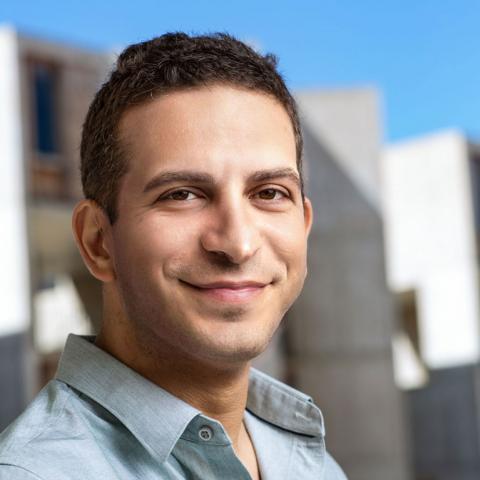Uri Manor, Ph.D.
Faculty Director, UCSD Goeddel Family Technology Sandbox
Assistant Professor, Cell & Developmental Biology
University of California, San Diego School of Biological Sciences
Faculty Host: Andrew McCulloch, Ph.D.
Seminar Information

The actin cytoskeleton plays important roles in a variety of cellular functions, including the regulation of organelle dynamics. In particular, the role of actin in the regulation of mitochondrial fission has been previously explored. Current evidence supports the model that actin polymerizes at ER-mitochondria contact sites, promoting mitochondrial constriction and allowing recruitment of key players in mitochondrial fission such as DRP1. Using probes we designed to specifically label mitochondria- or ER-associated actin, we were able to visualize accumulation of actin at mitochondrial fission sites, in agreement with already existing evidence. In addition, we made the novel observation that ER-associated actin also consistently accumulates at a wide range of other organelle fission sites including endosomes, lysosomes, peroxisomes, and the Golgi, suggesting a broad mechanism of organelle regulation by actin polymerization at ERorganelle contact sites. We also discovered actin accumulates at mitochondrial fusion sites, further expanding the role of mitochondria-actin interactions. To monitor organelle dynamics, high spatiotemporal resolution imaging with minimal phototoxicity is required. To address this challenge, we developed a deep learning-based approach for high speed, high SNR imaging of organelle mobility in live cells, and are now developing deep learning-based organelle tracking algorithms. To further push the boundaries of organelle imaging, we are developing quantitative phase imaging-based approaches that will prove particularly useful for primary patient-derived cells. As proof of principle, I will highlight new data captured from a 5-year old girl with a rare form of Charcot-Marie-Tooth disease. We are also investigating the most interesting actin-based structure in the biological kingdom: Inner hair cell stereocilia. Using gene therapy-based approaches, we are dissecting the role of actin-regulatory proteins in regulating stereocilia lengths. Along the way, we have also developed new deep learning-based tools for analyzing cochlear hair cell structures. Together, our work shows the combination of novel molecular and computational approaches will enable us to clarify the molecular mechanisms underlying health and disease.
Dr. Uri Manor is the Faculty Director of the Goeddel Family Technology Sandbox and Assistant Professor of Cell & Developmental biology at the University of California, San Diego School of Biological Sciences. The Manor Lab develops new methods and tools for studying cellular dynamics with nanometer precision (a sheet of paper is about 100,000 nanometers thick). This includes artificial-intelligence-based computational approaches (deep learning) that integrate data from microscopes to increase image resolution, sensitivity, and collection speed beyond what’s possible with any other existing method. The Manor Lab also develops new imaging, genetic, and molecular tools that facilitate the monitoring and manipulation of cellular structures implicated in diseases including neurodegenerative diseases and hearing loss. Using these advanced technologies, the Manor Lab connects structure to function. Their research advances scientists’ understanding of these cellular processes and ultimately helps discover and create new therapies for treating these conditions.
